Asteroids pose a severe threat to human civilization. Even relatively small objects have the potential to cause destruction by way of natural disasters equal to most devastating earthquakes. Thankfully, scientists have long been working on methods to combat this threat.
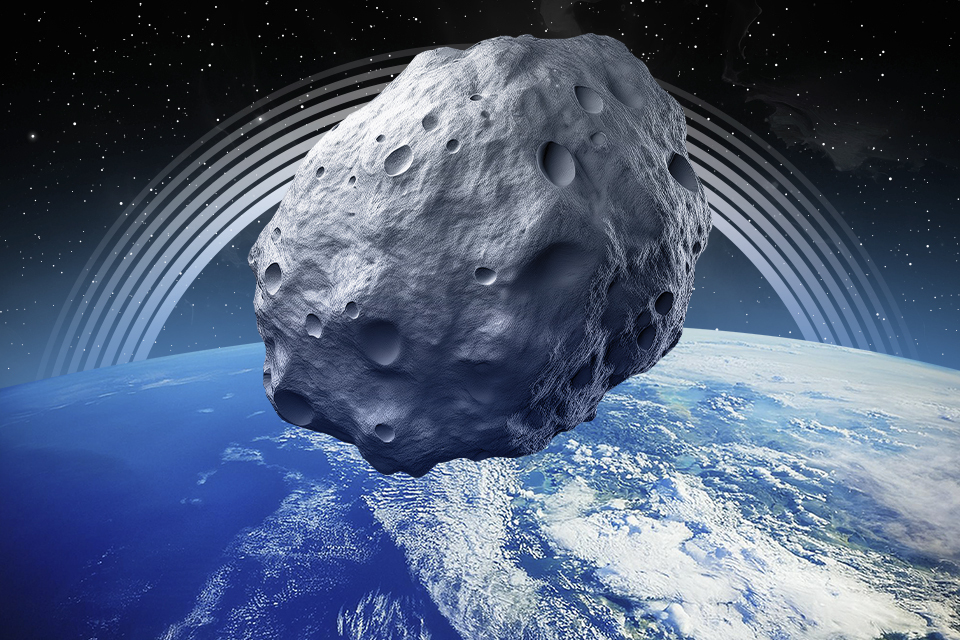
Asteroid Threat
For a long time, the likelihood of an asteroid hitting Earth has been one of the most relevant fears shared by developed nations. We all know that this fateful day is inevitable. That, one day, a giant space rock will hit our planet, wiping all life with it. And such an outcome seems only natural when this is exactly what doomed dinosaurs who’d once ruled the earth.
But the reality of it is a bit more complex. While large asteroids are capable of leaving craters that span miles across, they also happen to hit the surface of our planet relatively rarely, only about every few million years. Previous analyses of these impacts, when correlated with paleontological records, have shown that there’s plenty for scientists to be skeptical about when it comes to asteroids’ influence on the evolutionary process.
Even so, the asteroid threat is still a very real problem. The actual danger isn’t the monstrous rocky giants, though, but relatively small ‘pebbles’ measuring a few dozen miles across. When this type of rock enters earth’s atmosphere, it gradually heats up, eventually exploding with a force equal to a nuclear blast.
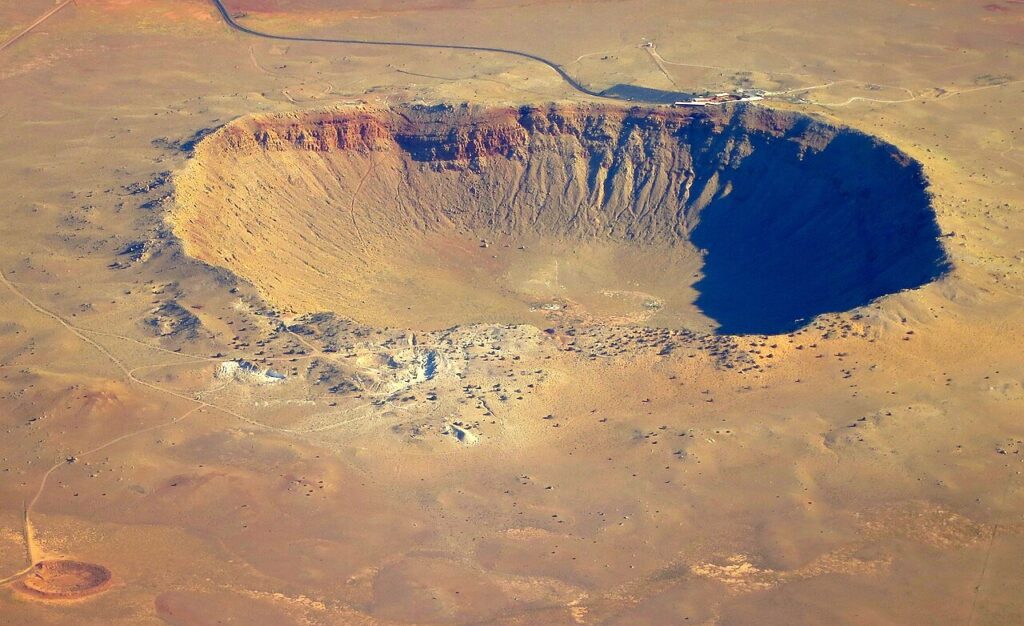
Should an event like this occur over a large city, it would likely result in thousands of casualties. As opposed to the infamous dinosaur killer, a small asteroid like this won’t take millions of years to get here – it will likely arrive in the next few decades.
Why We Can’t ‘Just Blow Up’ Dangerous Asteroids
up is… why don’t we just blow up these pesky rocks?
Well, it’s not as straightforward as it seems. Objects with linear dimensions of a few dozen feet may appear small only compared to those monstrous rocky giants. In reality, they are similar in size to skyscrapers or even mountains. If we were to place them on Earth for scale, only a powerful nuclear blast could completely destroy them.
Space, however, isn’t very conducive to this method due to the lack of atmosphere, so it simply won’t work well. Not only is it impossible to generate a blast wave, but the nuclear explosive devices would need to be buried deep beneath the asteroid surface to have any significant destructive power.
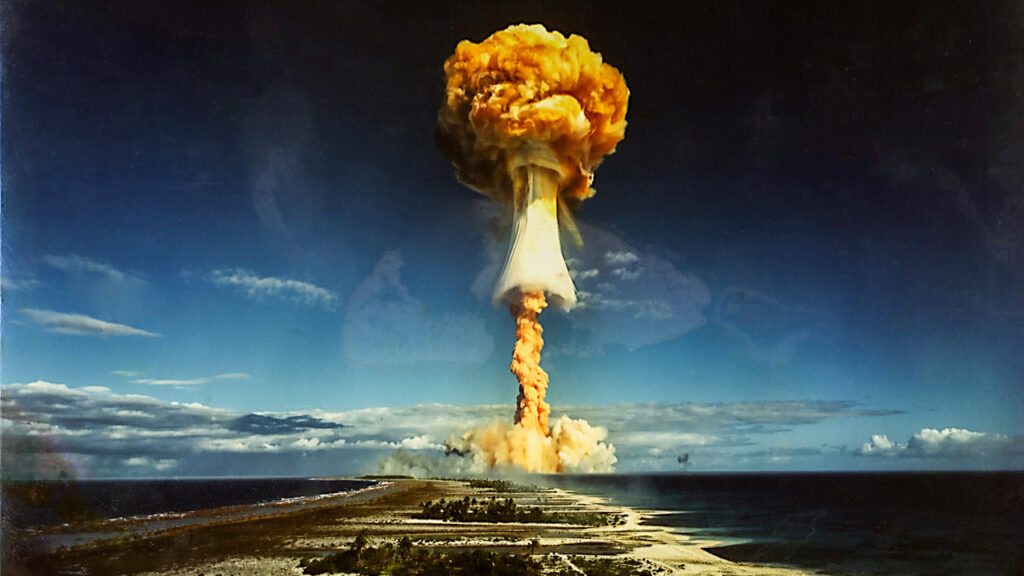
But splitting the asteroid won’t exactly help. Some of these objects are composed of multiple rocky segments, only held together by gravity. While it may be easy to compromise their integrity, it won’t do much to reduce their threat to Earth. After the explosion, all this newly fragmented churning mass will impact the planet either way, transferring its kinetic energy in the process.
Asteroid Redirection
More importantly, there is no need to destroy an asteroid in order to prevent disaster. Most space rocks aren’t actually that dangerous for the planet, even after they enter our orbit. So all we need to do is prevent all of these objects from coming down at the same time.
Earth covers an orbital distance equivalent to its diameter in roughly 425 seconds, or under 8 minutes. So to avoid a potential disaster, it would be enough to divert the planet’s rendezvous with an asteroid by this exact stretch of time.
But how would we achieve this? The first thing that comes to mind is that same nuclear bomb. Photon energy disperses much faster in vacuum compared to blast waves in the atmosphere. So if you detonate a bomb close to the asteroid’s surface, the rock would partially vaporize, forming a jet of matter with enough momentum to alter its orbit.
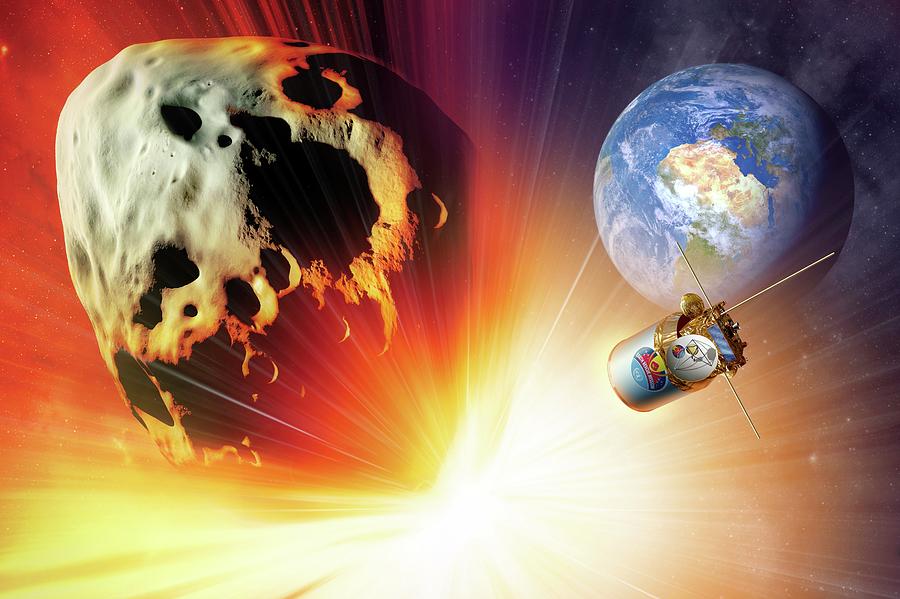
Though recent lab experiments with small rocks prove this, they still haven’t been replicated in the field. And regardless, this problem is not that easy to solve, even if we manage to land on an asteroid and start drilling away. After all, modern space technology is not quite advanced enough for us to place a nuclear charge — likely even more than one — mere feet away from the target, which happens to be removed from Earth by millions of miles. But if we ever master this method, it could potentially get rid of even large asteroids.
Kinetic Impact
That said, there really is no need for nuclear bombs. To redirect an asteroid, we can instead use its own weapon against it – kinetic energy. All we need to do is launch a spacecraft with the correct mass, accelerate it, and crash it into the asteroid at a specific point in its orbit.
This approach is considerably less complicated than nuclear weapons. Among all current methods for diverting asteroids from Earth, this is the only one we are certain of and can more or less predict its outcome.
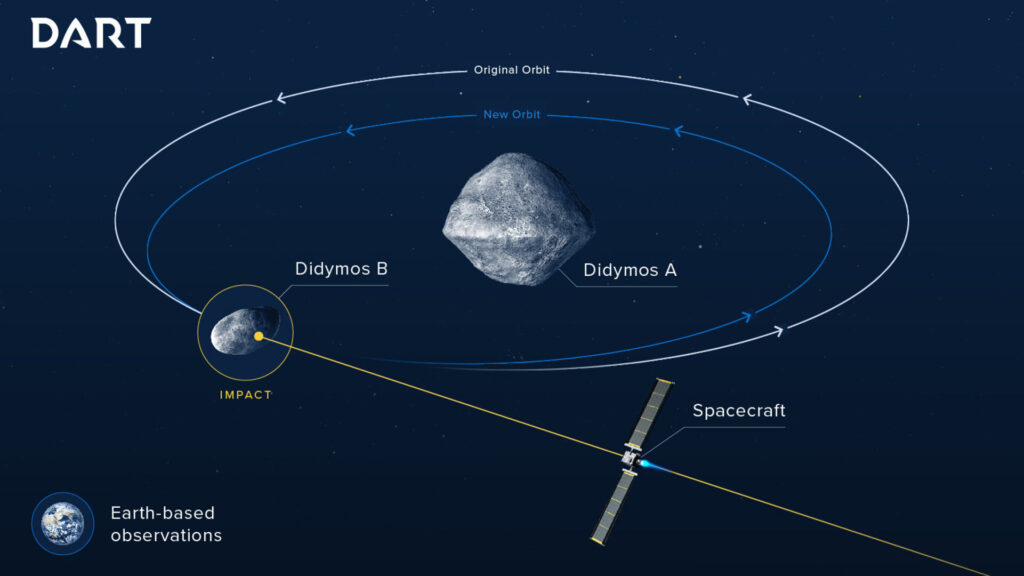
Moreover, a test of this kind has already been conducted with the DART mission. In 2022, a probe was intentionally crashed into Dimorphos, an asteroid moon that orbits its binary sibling Didymos. Following the test, researchers were able to make precise calculations of the changes in the asteroids’ trajectories. Suffice it to say, the method does work.
But it’s far from perfect. In order for it to work, we must figure out how to transfer enough energy to match that of the asteroid, which is measured in trillions of tons. In many cases, the only option to equalize the energy is with a nuclear explosion.
Gravity Tractor
Just as well, redirecting asteroids could be a less destructive venture. Instead of blowing stuff up, we could use a gravity tractor. Its core concept is placing a spacecraft with enough mass close to the looming asteroid.
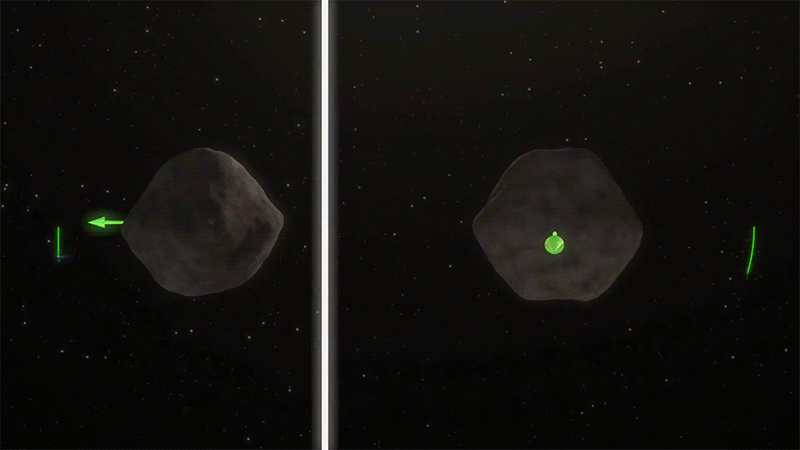
The resulting gravitational influence will be small, but nothing is truly inconsequential in space due to vacuum — so even weak forces are capable of changing trajectories. Though this method can take months and even decades to prove effective, the spacecraft won’t require any power to ‘tug’ objects. With time, the tractor will exert just enough influence on the asteroid for it to shift from its initial trajectory and pass Earth at a safe distance.
Despite its advantages, this method is flawed in many ways. In practice, it’s as difficult to carry out as kinetic impacts. It’s also only effective for tugging small asteroids, provided we also have years to work on it before the impact can occur.
What makes the gravity tractor method so appealing is the high level of process control. This would theoretically allow us to both divert an asteroid and pull it into Earth orbit, should the space rock contain an abundance of mineable minerals.
Ion Beams, Mirrors, and Solar Sails
Another possibility is using ion ‘cannons’. These particle beams can be fired at the asteroid from any convenient location until the rocky surface vaporizes, forming a jet stream of matter. While a fascinating concept, this idea is not so easy to implement. Where would we get such massive amounts of energy?
Enter mirrors. This play on the ‘cannon’ method is even more fascinating. It implements a mirror that virtually functions in the same way as the gravity tractor. Except in this case, the mirror is used to collect and redirect sunlight.
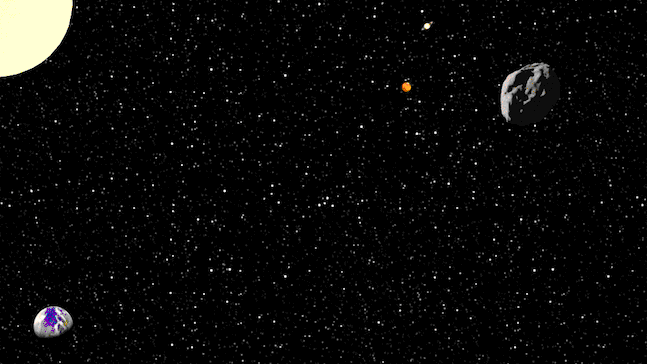
This structure needs to reach truly enormous dimensions to collect sufficient amount of sunlight and then direct it on a price spot on the asteroid, thus producing a jet stream through vaporization. In concept, the mirror approach combines the best aspects of the gravity tractor and ion cannons. If we manage to turn it into a reality, we could potentially wrangle larger asteroids that would otherwise require nuclear blasts to manage.
But it gets better. If we succeed in building an object with a large enough surface area capable of collecting solar energy, then there won’t be any need to shine the solar beam on a one specific spot. Instead, this new type of structure can then be attached to the asteroid and used as a solar sail. Though the produced effect will likely be minimal, if left long enough, say a few months, it might alter the asteroid’s orbit enough to divert it from Earth.
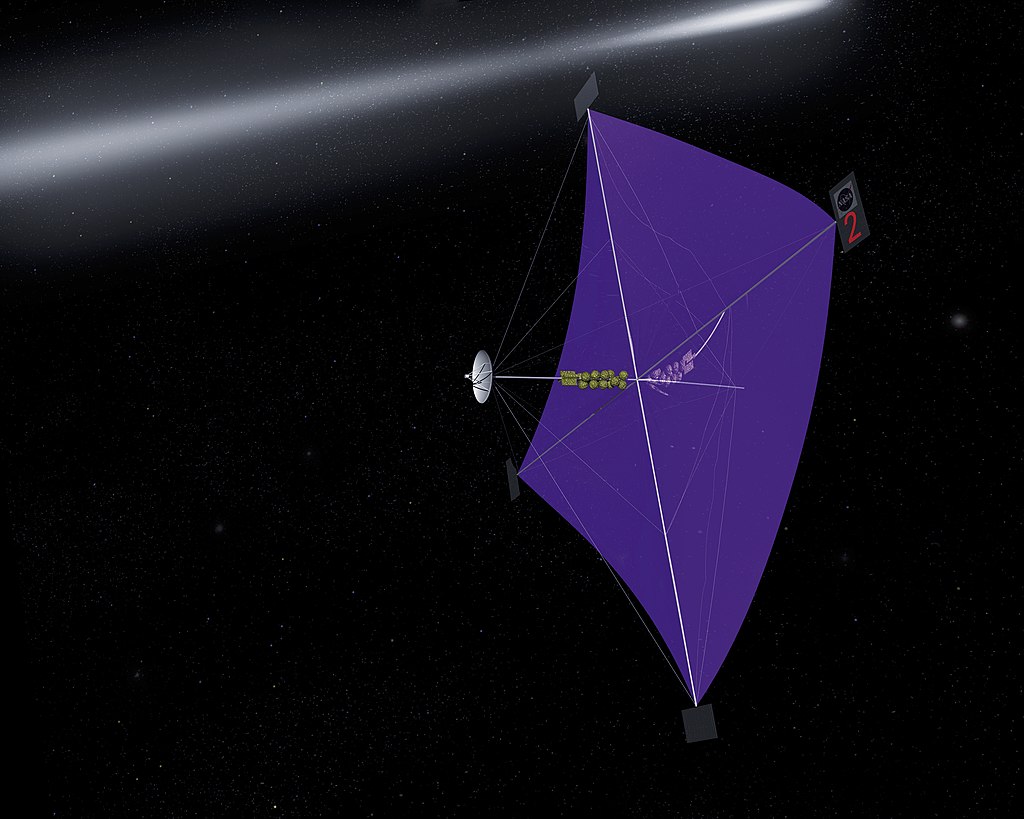
Unfortunately, any technology powered by sunlight is only effective in proximity to our star. As you move away from it, the energy density also decreases, so both the mirror and solar sail methods lose their effectiveness.
Jet Propulsion
Finally, we can redirect an asteroid with a more direct approach. This involves landing a probe powered by jet propulsion on its surface. Then, once we engage the engine, we could transfer the impulse to the asteroid, changing its trajectory.
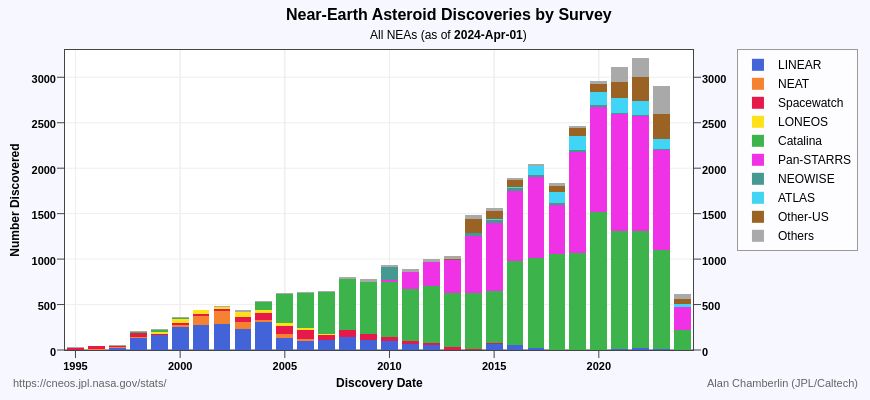
While the idea is sound, it raises a more pressing concern, aside from the usual “how do we get and land there?” problem. The issue is fuel. We’d need a ridiculous amount of fuel to power such an engine. Its propulsive capacity isn’t great to begin with, but traditional fuel reduces its effectiveness even further.
Hence, why this method is developed with next generation engines in mind, namely those powered by ion fusion and plasma. Their propulsion is much higher compared to regular chemical engines, not to mention they would require less fuel to do the same work of altering the asteroid’s trajectory over the course of several months.


